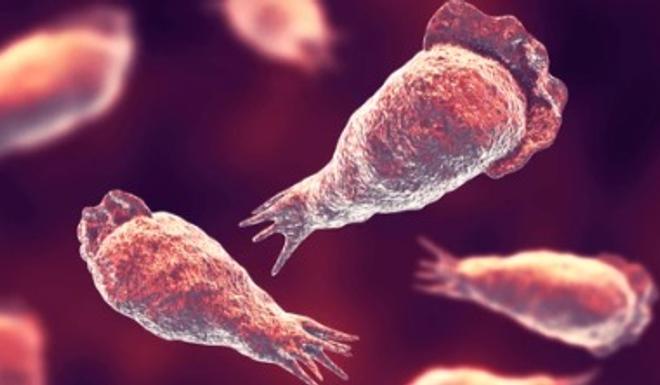Published 21:26 IST, July 16th 2024
Brain-Eating Amoeba Spreads In Kerala: Causes, Symptoms, Risk Reduction
Naegleria fowler, a brain eating one-celled organism, thrives in warm freshwater bodies such as lakes, rivers and hot springs.

A 14-year-old boy in Kerala recently succumbed to a rare brain infection, amoebic meningoencephalitis, caused by a free-living amoeba found in contaminated water. This tragic case marks the third such fatality in Kerala within the past two months. The boy was admitted to the hospital on June 24 after contracting the infection following a bath in a pond.
Brain-eating amoeba
The Centers for Disease Control and Prevention (CDC) identifies Naegleria fowleri as a brain-eating amoeba. This one-celled organism thrives in warm freshwater bodies such as lakes, rivers, and hot springs. The amoeba can infect the brain, causing severe and often fatal damage. While infections are rare, their fatality rate is extremely high.

Causes of brain-eating amoeba infections
Infections occur when Naegleria fowleri enters the brain through the nasal cavity, typically when contaminated water is inhaled. The amoeba is prevalent in warm freshwater environments, making swimming in such bodies a risk factor.

Symptoms of brain-eating amoeba infection
Symptoms of primary amoebic meningoencephalitis (PAM) usually appear 2 to 15 days after exposure. The onset is sudden and severe, including:
High fever
Intense headache
Nausea and vomiting
Trembling
Stiff neck and extreme light sensitivity (photophobia)
Mental confusion
Coma
Risk factors for brain-eating amoeba
According to the Cleveland Clinic, infections generally occur after swimming or diving in warm freshwater bodies during the summer. High water temperatures and low water levels can increase the risk. Additionally, infections have occurred from using contaminated tap water for nasal rinsing or from recreational water sources with inadequate chlorine levels.
How to reduce risk of infection?
To minimize the risk of infection from brain-eating amoeba:
Hold your nose or wear a nose clip when swimming in freshwater bodies.
Avoid disturbing shallow water, where the amoeba is more likely to be present.
Keep your head above water in hot springs.
Use distilled or previously boiled tap water for nasal rinsing or cleansing.
While Naegleria fowleri infections are rare, their severe consequences necessitate caution, particularly when engaging in activities involving warm freshwater bodies. Understanding the risks and taking preventive measures can help reduce the chances of contracting this deadly infection.
Updated 21:26 IST, July 16th 2024


